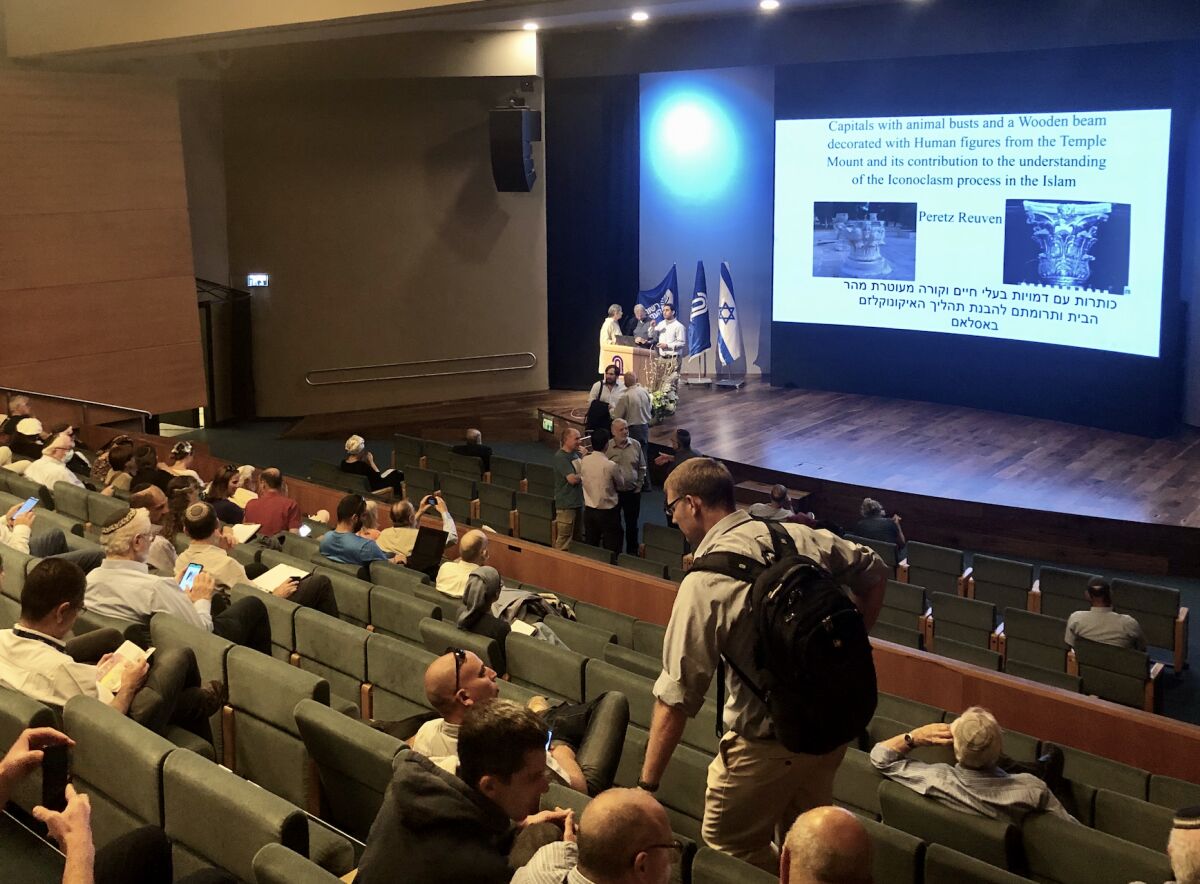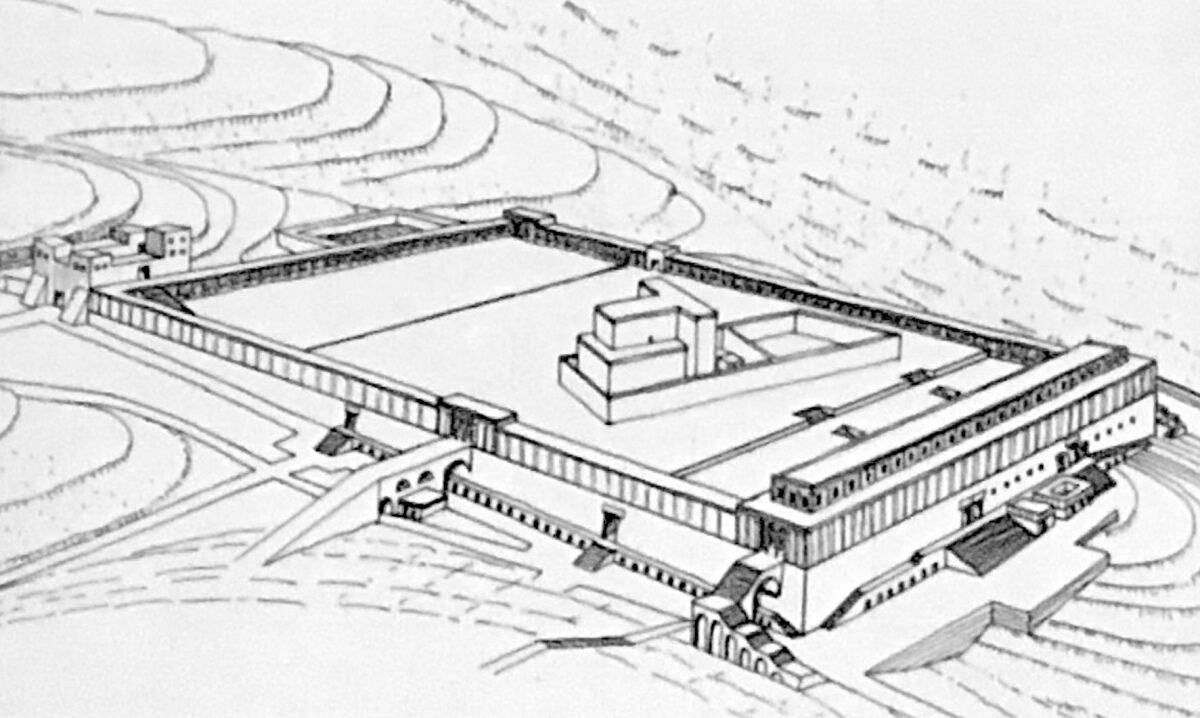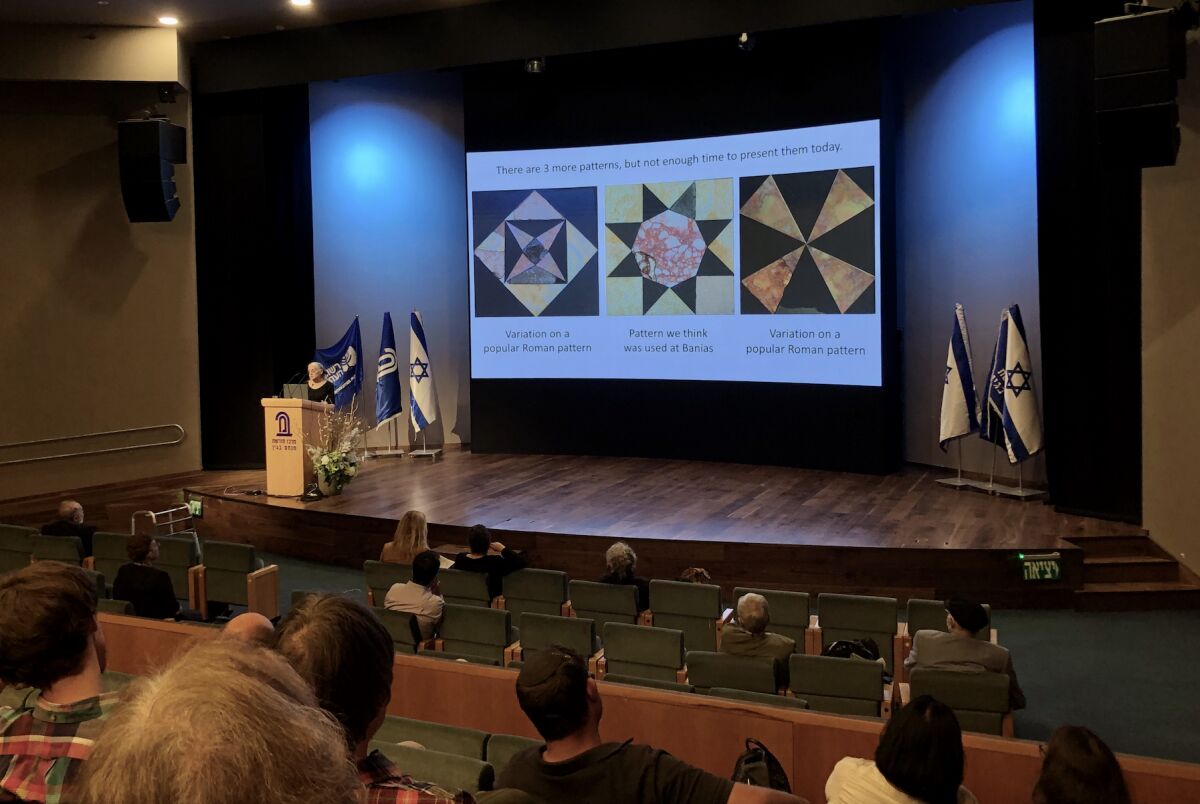Highlights From a New Academic Conference on Temple Mount Research
Last week marked the inaugural “International Academic Conference on New Studies in Temple Mount Research,” hosted on Wednesday, May 18 in Jerusalem’s Menachem Begin Heritage Center. The meeting, which featured speakers from Israel, the UK and the U.S. in person and via Zoom, was promoted by the Temple Mount Sifting Project as “the first time that academic institutions in Israel dedicate a whole conference to the study of the Temple Mount.”
Armstrong Institute office manager Brent Nagtegaal and I attended the meeting, which was divided into two series of lectures: the first in Hebrew, and the second in English. The evening provided a fascinating look at new research pertaining to the Temple Mount complex, as well as attempts to interpret old research from the site.

The event had barely begun when one of the toastmasters used his platform to decry a key theory of Prof. Israel Finkelstein and his associates: that the Temple Mount hill was the original site of Jerusalem, and that the city only later expanded down to the “City of David.” This theory is contrary to historical texts (not least of which is the Bible) and predicated on the notion that it can’t be proved wrong because of the impossibility of excavations on the Temple Mount. “He can’t just go dropping bombs like that,” Jerusalem archaeologist Prof. Dan Bahat proclaimed (or words to that effect), as he proceeded to introduce the speakers.
To that point, underpinning the conference was the fact that certain excavations have taken place on the Temple Mount historically, not to mention the numerous ongoing excavations against and around the Temple Mount walls, which can help give us a window into understanding the Temple Mount and its historical phases of use. Many of these old excavations remain unpublished, existing only in raw data form (i.e. diary entries). Certain of these records were highlighted at the conference, as well as the need to properly publish them. With such records (among other means), we can start to form a picture of the Temple Mount complex throughout history.
In that vein, Ariel University’s Aharon Tavger began the speeches with a summary of his research on Iron Age religious complexes being situated just outside their respective cities—e.g. at Bethel and in Jerusalem (noting the biblical account of King David’s purchase of land just outside the city to build the temple, recorded in 2 Samuel 24 and 1 Chronicles 21).

Still, questions abound surrounding the temple’s actual location. One speaker, Prof. Joseph Patrich, ignited some debate with his brave presentation of an entirely new theory, that the Second Temple was orientated diagonally inside the Temple Mount complex. This theory is based on the layout of underground cistern remains on the Temple Mount, as well as an azimuth alignment theory, with the temple directionally facing the sunrise as it was at the time of the Second Temple’s dedication circa 515 b.c.e. Needless to say, his theory was met with some resistance (calls for questions from the audience were denied by the toastmaster). Certain of the following speakers took aim at his interpretation in their own allotted time. Still, the question of the exact situation of the temple was generally left unanswered by other speakers, who largely deferred to the traditional location in or around the site of the Dome of the Rock.
In the theme of upending traditional interpretations, the Israel Antiquities Authority’s Tehillah Lieberman addressed the question of “Who Built the Western Wall?” She highlighted the new archaeological evidence that Herod did not build the Western Wall of the Temple Mount; rather, it was completed decades after his death. Her conclusion, therefore, is that Herod must have been primarily responsible for constructing the inner compound—the outer wall instead befitting the work of later first-century c.e. rulers.
https://www.youtube.com/watch?v=Qh-0lJw8Ghw&list=PLRbe8o6AmYrOjneP94-HKRnq9aMRZVCGU&index=2&ab_channel=TempleMountNewStudies
She was followed by the University of Haifa’s David Gurevich, who preempted his speech with a dedication to the late Dr. Eilat Mazar (something aiba staff never get tired of, having served alongside her over the past 15 years). Gurevich’s speech, entitled “Why Did the Romans Seize the Antonia Fortress on their Way to the Temple?” attempted to harmonize the small northern Antonia fortress (as it is traditionally depicted) with the accounts of Josephus, who described the necessity of the Roman legions to first defeat this fortress before being able to take over the temple complex and wider Jerusalem itself. (From Josephus’s Wars, 6.1.5, quoting the Roman commander Titus: “For if we go up to this tower of Antonia, we gain the city; for if there should be any more occasion for fighting against those within the city, which I do not suppose there will, since we shall then be upon the top of the hill … these advantages promise us no less than a certain and sudden victory.”)
Various other speeches were delivered, in Hebrew and in English, on topics such as Aelia Capitolina, zoomorphic Islamic-period capitals, and the architecture of the “Cradle of Jesus” compartment on the Temple Mount. Roman and mathematics expert Frankie Snyder gave a dynamic, standout speech creatively titled “The Stones that the Salvagers Rejected” (a word-play on Psalm 118:22), explaining how she determined the correct reconstruction of the angular Herodian Temple Mount tile fragments discovered by the Temple Mount Sifting Project.

Her associate Zachi Dvira, co-director of the Temple Mount Sifting Project (and one of the evening’s organizers) concluded the evening with a fascinating lecture on the ordinarily “mundane” remains found while sifting the illegally excavated Temple Mount dumps: the simple pottery pieces. He highlighted how assessing quantities and percentages of datable pottery from different periods can give a good comparative picture of the overall extent of the Temple Mount’s use and disuse during different historical periods. He revealed how the material can also give an idea of who was primarily responsible for the massive accumulations of earthen dumps in and around the site.
As is typical for an event such as this, many questions were answered (accompanied by the promise of further explanation in forthcoming academic papers), but many more were asked. We can only look forward to the next conference, and to hearing about the fruits of ongoing Temple Mount-related work happening right now.